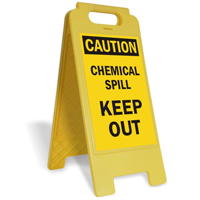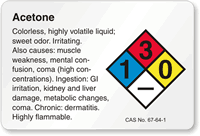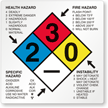How to Clean Up Chemical Spills in the Lab
Whether large or small, spills require caution and skill to contain them safely. Here’s a quick general response guide on how to clean up chemical spills in the lab.
- If the spill can result in vapors or airborne dust, shut doors and windows to the lab and increase ventilation through fume hoods. If your facility’s ventilation recirculates air to other parts of the building, shut the ventilation and contact your facilities manager. Post a warning sign outside of the lab to inform of the spill and keep untrained personnel out.
- Douse or turn off any sources of ignition around. Unplug electrical equipment to prevent sparks or fires.
- Pour neutralizing agent over the spill depending on whether it is an acid or base. For acid spills, use soda ash or sodium bicarbonate. Use citric acid or ascorbic acid for bases. Use a pH paper to examine whether spills have been neutralized.
- Surround the spill with spill pillows or pads. Avoid using inert absorbents like cat litter on flammable spills as the absorbent may later catch fire. Similarly, do not use paper towels as it increases the rate of evaporation of the flammable liquid. Start out and work your way inward when you are containing and covering the spill.
- Collect the absorbed or neutralized spill with a non-sparking tool like a plastic dustpan, scoop, or shovel.
- Seal it into heavy-duty polythene bags. Seal solid materials into a leakproof container. Label it as hazardous waste and include pertinent details about the spilled chemical. Dispose of it via your facility’s approved hazardous waste management system.
- Clean the area with detergent and water after the spill cleanup. Do not use vacuum over the spill area while cleaning. Check reactivity of the chemical before cleaning it with water or other cleaning supplies.
- Replenish your spill clearing and cleaning supplies. Mark the storage area of your spill kit to facilitate quick access.
Treating splash victims:
In case of a body splash, remove the victim’s contaminated clothing and take them to an emergency shower to flush the affected area with water for continuous 15 minutes or more. Do not use soap or lotions.
In case of an eye splash, take the victim to the nearest eye wash station away from the spill area. Hold their eyes open and flush eyes for continuous 15 minutes or more.
Contact emergency personnel to ensure victims get the right medical attention.
Wearing appropriate PPE
While cleaning up the spill, ensure you wear all the personal protective equipment required for that chemical. Refer the Safety Data Sheets (SDS) for appropriate PPE. You should have ready access to safety gloves, splash goggles or face shield, shoe covers or rubber boots, Tyvek coveralls, air purifying respirator.
Note: If spills are larger than you are trained to clean, contact the emergency response provider and the fire department. It is also important to evacuate the room where the spill has occurred leaving only those who are responsible and trained for cleaning the spill. Take victims out of the spill area without endangering your own life.
Category: Resources

















